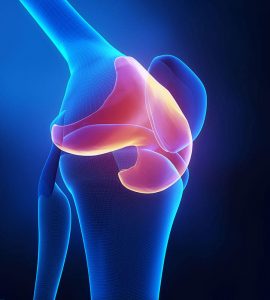
Meniscus Specialist in Singapore
Dr James Tan Chung Hui
Qualifications and Certifications
- Bachelor of Medicine, Bachelor of Surgery (Singapore)
- Member of the Royal College of Surgeons (Edinburgh)
- Master of Medicine in Orthopaedic Surgery
- Fellow of the Royal College of Surgeons in Orthopaedics and Trauma (Edinburgh)
- Adjunct Assistant Professor (NUS, LKC)
Dr James Tan is an experienced surgeon with over a decade of experience in sports medicine and treating meniscus injuries among elite athletes, including those from the Singapore National Teams and professional football leagues. Having received fellowship training at the Technical University of Munich, Dr Tan is proficient in minimally invasive techniques for ligament, meniscus, and cartilage repair; and is actively involved in research and teaching. As a three-time Service Champion Gold Award winner, Dr Tan is committed to providing exceptional care and personalised treatment for all his patients.
What Is the Meniscus?
Located in the knee between the thigh bone (femur) and the shin bone (tibia), the meniscus is a c-shaped pad of cartilage that functions as a shock absorber. Each knee has two menisci – the medial meniscus located on the inside of the knee and the lateral meniscus located on the outside of the knee.
What Happens When the Meniscus Is Torn?
Meniscus tears in Singapore are an incredibly common injury, particularly among athletes in contact sports or sports that require a lot of squatting, twisting, and rapid changing of directions. Nonetheless, anyone can get a meniscus tear, even in recreational activities.
A meniscus tear usually happens when one twists or turns their upper leg while their foot is planted on the ground and their knee is bent. In sports, a pivoting or cutting injury is very common. A meniscus tear is usually accompanied by a popping sensation.
When the meniscus is torn, a collection of synovial fluid (the thick liquid located between the joints) may accumulate within or adjacent to the meniscus, forming what is known as a meniscal cyst.
Locations of Meniscus Tears
Meniscus tears can be broadly categorised based on their location and pattern. These include:
Medial Meniscus Tear
A medial meniscus tear occurs on the inner side of the knee. This type of tear is more common because the medial meniscus bears a greater load and is less mobile than the lateral meniscus.
Symptoms often include pain along the inner knee, swelling, and difficulty moving the knee. Medial meniscus tears can result from acute injuries during sports (rotational or twisting injuries) or degenerative changes over time.
Common types of medial meniscus tears include: longitudinal, radial, and bucket-handle tears. Degenerative tears may also occur in the medial meniscus.
Lateral Meniscus Tear
A lateral meniscus tear affects the outer side of the knee. They are less common than medial tears, and often occur due to sudden twisting motions or direct impact.
Symptoms typically include pain in the outer knee, swelling, and joint instability. Like medial meniscus tears, lateral meniscus tears can stem from both acute trauma (associated with sports and sudden twisting motions) and degenerative conditions.
Common types of lateral meniscus tears include radial teras, flap tears, and complex tears.
If you think you may have sustained a meniscus tear,
seek medical attention at 8028 4572 today.
What Is the Difference Between Acute vs Degenerative Tears?
It should also be noted that besides acute tears resulting from trauma, the meniscus can also tear from degenerative changes that happen over time. In such cases, an awkward twist while standing up from a chair may be sufficient to tear an ageing meniscus.
What Are the Symptoms of a Torn Meniscus?
It is common for many people to still be able to walk on their injured knee soon after their meniscus is torn. After a few days, however, the symptoms will become more apparent.
- Localised pain in the knee, usually around the inner or outer side of the knee
- Stiffness and swelling in the knee
- Catching or locking of the knee
- Sensation of the knee “giving way”
- Limited range of motion
What Are the Risk Factors of a Torn Meniscus?
Several risk factors can increase the likelihood of sustaining a torn meniscus, such as:
- Age – As people age, the meniscal cartilage becomes more brittle and prone to degenerative tears.
- Athletic Activities – Engaging in sports that involve twisting, pivoting, or sudden stops and turns, such as soccer, basketball, and football, increases the risk of acute meniscus tears.
- Previous Knee Injuries – A history of knee injuries can weaken the meniscus, making it more susceptible to future tears.
- Occupational Activities – Jobs that require frequent kneeling, squatting, or heavy lifting can put extra strain on the meniscus, increasing the likelihood of injury.
- Obesity – Excess body weight places additional stress on the knee joint and meniscus, heightening the risk of tears.
- Poor Conditioning – Weak muscles around the knee and hip can lead to imbalances and improper movements that increase the risk of meniscal injuries.
Possible Complications of Meniscus Tears
If left untreated, complications may arise that can impact one’s daily life and long-term knee health:
- Chronic Knee Pain – Without proper treatment, meniscus tears can lead to ongoing knee pain that affects daily activities and overall quality of life.
- Knee Instability – A torn meniscus can cause persistent instability in the knee joint, making it prone to giving way and increasing the risk of additional injuries.
- Reduced Range of Motion – Continuous stiffness and swelling from a meniscus tear can limit the knee’s range of motion, making tasks like walking, climbing stairs, or bending difficult.
- Degenerative Arthritis – Over time, an untreated meniscus tear can contribute to osteoarthritis due to uneven load distribution and joint instability.
- Joint Locking – Pieces of the torn meniscus can become lodged in the knee joint, causing it to lock or catch, which may require surgical intervention to remove the fragments.
How Are Meniscus Tears Diagnosed?
Diagnosing a meniscus tear typically involves a combination of physical examinations and imaging tests to confirm the presence and extent of the injury:
- MRI – Magnetic Resonance Imaging (MRI) scans can provide detailed images of the knee’s soft tissues, which includes the ability to identify a meniscus tear’s location, size, and severity.
- X-ray – While meniscus tears do not typically show up on X-rays, an X-ray can help to rule out other causes of knee pain, such as fractures or arthritis, by visualising the bones.
Meniscus Tear Treatment in Singapore
If the knee injury is found to be a meniscus tear, treatment will be customised based on the patient’s age, symptoms, activity level, and the type, location, and severity of the tear. Treatment options for meniscus tears can range from conservative methods to surgery.
Non-Surgical Meniscus Treatment
Meniscus tears in the outer one-third of the knee often have a good chance of healing on their own as this area has a rich blood supply. Conservative, non-surgical treatments can sometimes enhance this process, which include:
- RICE Method – The RICE method comprises of Rest, Ice, Compression, and Elevation. This method helps reduce swelling, relieve pain, and prevent further injury.
- Nonsteroidal Anti-inflammatory Drugs (NSAIDs) – NSAIDs can be effective in reducing inflammation and alleviating pain associated with a meniscus injury.
- Steroid Injection – For more severe cases, a steroid injection into the knee joint can help reduce inflammation and pain.
- Physiotherapy – Physiotherapy is important in strengthening the muscles around the knee, improving flexibility, and restoring function.
- Biologic Injections – Biologic injections have gained attention for their potential to accelerate healing. PRP involves injecting concentrated platelets from one’s own blood into the injured area to stimulate tissue repair and reduce inflammation.
Meniscus Surgery Procedures
The inner two-thirds of the meniscus has a limited blood supply, which means that tears in this area cannot heal. As the pieces here cannot grow back together, symptomatic tears typically do not respond to conservative meniscus injury procedures and usually need to be surgically trimmed.
Surgical procedures may also be necessary when non-surgical treatments fail to alleviate symptoms effectively. Surgical options to treat meniscus tears include:
- Knee Arthroscopy – Knee arthroscopy is a minimally invasive procedure that involves inserting a small camera (arthroscope) into the knee joint via small incisions. This allows the orthopaedic surgeon to view the inside of the joint and perform necessary repairs.
- Partial Meniscectomy – A partial meniscectomy involves removing the damaged portion of the meniscus while preserving as much of the healthy tissue as possible.
- Meniscus Repair – Meniscus repair is a surgical procedure that involves stitching the torn edges of the meniscus back together. This is generally preferred for younger patients and those with tears in the outer, vascular part of the meniscus where the healing potential is greater.
Recovery After Meniscus Treatment
Recovery after meniscus treatment depends on the severity of the injury and the type of treatment received. Post-surgery, the patient will work closely with a physiotherapist to facilitate proper rehabilitation. This will restore your knee’s mobility, strength and range of motion. Remember to adhere to your doctor’s instructions for a smooth and successful recovery.
FAQs
What can I do to prevent a meniscus tear?
To reduce the risk of meniscus tears, focus on improving your knee strength, flexibility, and stability. During sports activities, practise good technique and wear supportive footwear. Maintaining a healthy weight also minimises stress on your knees.
How much does a meniscus tear surgery cost in Singapore?
The cost of meniscus tear surgery in Singapore varies greatly depending on the technique used, the type of hospital, the surgeon’s fees, the complexity of the surgery, and the patient’s insurance coverage. For more information, please contact our clinic at 8028 4572 today.




